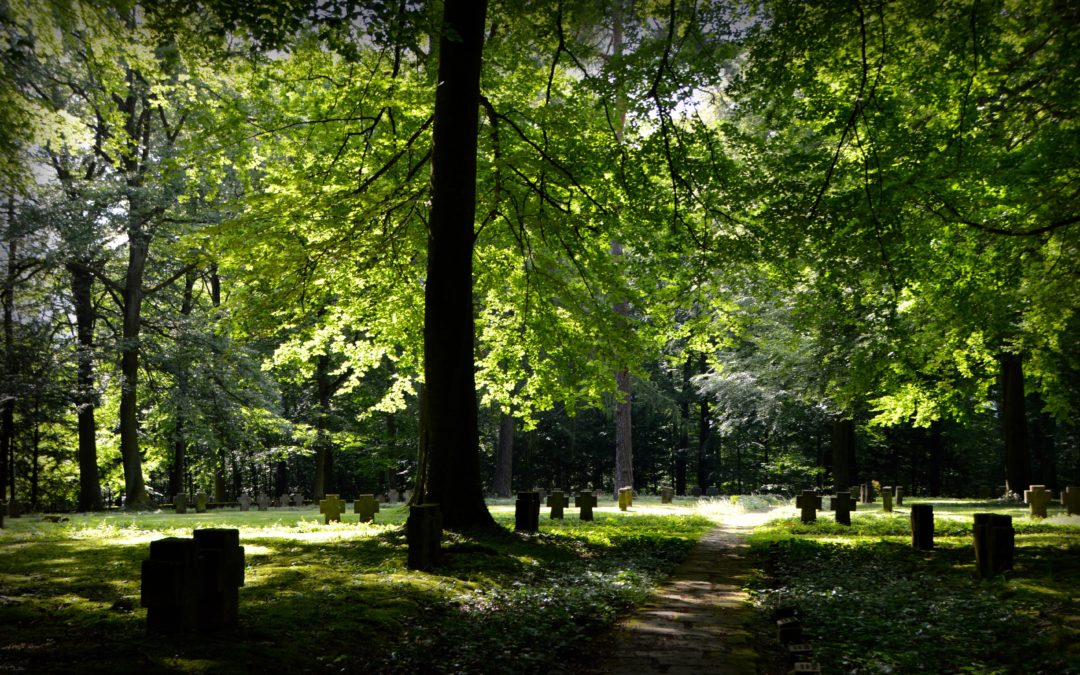by Lisa A. Smith—
“Mommy, why did God make it so we die?” my 5-year-oldson suddenly asked. We were sitting together on the sofa. The question pierced me. I reached over to hold him before responding.
He has been asking a lot of questions about death lately. It can be unnerving, but our pediatrician says it’s developmentally appropriate and common for this age. My older child went through this phase, too, but not during a global pandemic, which puts a finer point on things.
So many of us grown-ups have questions about death, too. When I was an undergraduate at an ELCA college, the two most popular—and thus difficult to get into—religion classes were “Death and Dying” and “Sex and Sexuality,” both taught by our campus pastor. Sometimes the death class had a longer wait list than the sex class.
Children want to talk about death, but sometimes adults struggle with what to say. The first time my oldest child asked me about death, I was speechless, even though I had two advanced degrees in religious studies and 10 years of service as a pastor, and had presided at dozens of funerals. It is one thing to bury an elderly member of your congregation; it is quite another to discuss mortality with your beloved preschooler.
Our own life experiences shape the way we discuss (or don’t discuss) death with children. These may include childhood traumas, but also the conventions and norms of where we grew up. I was raised on a farm in the Midwest, where death seemed closer than in the urban West Coast region where my children are growing up.
As a child, I knew where the cattle were headed when they were rounded up and hauled away. I attended most of the funerals at our church, often helping my mom in the kitchen. We slathered butter on rolls and piled them high with thin slices of ham, arranged cookies on round platters and set out pitchers of sweet punch. I went to visitations at funeral homes, pausing by open caskets to remember a relative or friend of the family who had died. Every Memorial Day, we decorated our relatives’ graves at the cemetery. Death was part of the rhythm of community and family life.
By contrast, where we now worship, we have few elders in the congregation. My children have only attended one funeral. When Aunt Lorraine, who was also my godmother, died several years ago, I caught a flight back to the Midwest, traveling with two children under age 5. I was exhausted when we arrived at the funeral home. I’d tried to prepare my children for what they would see, but I was so tired and sad that I feared someone would melt down (maybe me). My children peeked into the casket. I touched her hand. So did my oldest son. “It’s cold,” he said. But he did not seem afraid.
That weekend, I told my children stories about my aunt, who was a devoted teacher, an enthusiastic museum volunteer and a lover of monarch butterflies. We flipped through photo albums. We hugged relatives I hadn’t seen in years. We shared tears, laughter and gratitude.
After college, while traveling in Central America, I passed by a cemetery. It was early November and large groups of people were picnicking, blankets spread around among the graves. Over open baskets of food, people laughed and talked. It looked festive. Our translator explained that it was Día de los Muertos, the Day of the Dead, when those who have died are remembered. It was my first exposure to this traditional Latinx celebration on Nov. 2. It seemed wholly outside my own and my family’s experience of understanding death and grief. But was it?
Years later, my mom and I strolled through the Iowa River Cemetery in the rolling hills of northeast Iowa. Surrounded by soybean fields and pastureland, this cemetery had lost its accompanying Lutheran church building decades ago in a fire. My mom pointed out the headstones of the great-great-grandparents I’d never met. We mused about what their lives were like as immigrants from Norway. Then I asked Mom about an open area in the center of the gravestones. “Oh,” she said, “that’s where we set up and ate every year at the Iowa River Cemetery picnic.” Suddenly I realized what it means to picnic by the graves. In that holy space, the living and the dead are embraced together by God.
Ritual and remembering are sacred acts, tools we can use to talk about death with our children. When children attend a funeral or memorial service, stroll through a cemetery, or put up a photo of a beloved grandmother who has died, they learn ways to express and process their grief. They learn that death is part of life and that it’s okay to talk about it. They learn it’s okay to ask questions and feel any emotions that come up.
All Saints Sunday comes just a few weeks before the extended holiday season of Thanksgiving-Advent-Christmas, celebrations that get mixed and blurred by secular culture. This “most wonderful time of the year” is also a time of sadness for many, as we remember those who have died and grieve complicated or estranged relationships. It can be hard to make space for talking about death and loss amid the preparations for Thanksgiving and Christmas.
I’m thankful for the gift of my Lutheran Christian faith, which provides space for a range of emotions, relationships where we can be real with each other, theological language to hold joy and sorrow simultaneously and, most importantly, an understanding that death isn’t the final word. We are people of resurrection hope. God holds us all, through it all.
That day on the sofa with my 5-year-old, I didn’t know quite what to say when he asked why “God made it so we die.” So I said he’d asked a good question, and we don’t really know the answer. “God loves us when we are alive and after we die,” I said. “God will care for us forever, and I, too, will love you forever.” I told him that because we don’t live on earth forever, we make the most of the time we have by loving and caring for others.
“Well,” he said, “I guess I don’t have to worry about this right now.”
Yes, sweet child, you do not.
And yes, fellow children of God, we do not.
The Rev. Lisa A. Smith is an ELCA pastor who loves exploring the wilderness. She blogs at pastorlisawrites.com.
This article is from the November/December 2021 issue of Gather magazine. To read more like it, subscribe to Gather



Thanks Lisa!